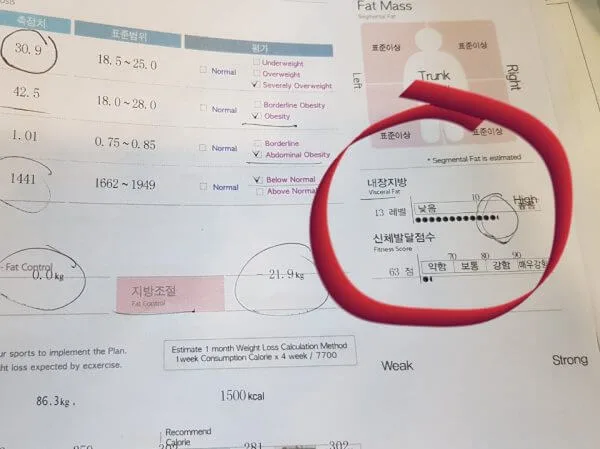Desvelando el misterio de la obesidad visceral: por qué la cirugía no es suficiente
La obesidad visceral, también conocida como obesidad central, es una afección en la que la grasa se acumula en la cavidad abdominal, rodeando importantes órganos internos como el hígado, el páncreas y los intestinos. Este tipo de grasa es diferente de la grasa subcutánea, que se encuentra justo debajo de la piel. Si bien la grasa subcutánea se puede tratar a través de procedimientos como la liposucción o la abdominoplastia, la grasa visceral se encuentra más profundamente en el cuerpo y no se puede eliminar quirúrgicamente (SpringerLink).

¿Por qué es peligrosa la obesidad visceral?
Visceral fat isn’t just a passive layer of storage. It’s metabolically active and releases hormones and chemicals that can interfere with your body’s normal functions. High levels of visceral fat are linked to an increased risk of serious health problems, such as:
- Heart Disease: Visceral fat contributes to inflammation and can lead to the buildup of plaque in your arteries, increasing the risk of heart attack and stroke (SpringerLink).
- Type 2 Diabetes: It’s associated with insulin resistance, making it harder for your body to regulate blood sugar levels.
- High Blood Pressure: Excess visceral fat puts more strain on your cardiovascular system, raising blood pressure.
- Fatty Liver Disease: The fat surrounding the liver can lead to its dysfunction and even liver scarring (cirrhosis) over time.
¿Por qué la cirugía no puede eliminar la grasa visceral?
Los procedimientos como la liposucción y la abdominoplastia están diseñados para eliminar la grasa subcutánea, que se encuentra justo debajo de la piel. Sin embargo, la grasa visceral se almacena en el interior de la cavidad abdominal, rodeando los órganos vitales, lo que la hace inaccesible a través de la cirugía. Además, algunos estudios sugieren que la liposucción puede conducir a un aumento compensatorio de la grasa visceral si no se combina con actividad física regular (Oxford Academic).
El papel de la liposucción y la abdominoplastia en el tratamiento de la obesidad
While it’s true that liposuction or tummy tuck cannot eliminate visceral fat, they can still play an important role for patients struggling with obesity. People with severe visceral obesity often have a low basal metabolic rate and may find it difficult to achieve significant results from diet and exercise alone. In fact, studies suggest that the success rate for weight loss through lifestyle changes is less than 8% for individuals with obesity.
By removing external fat through procedures like liposuction or tummy tuck, patients can experience a dramatic improvement in their appearance, which can serve as a powerful motivation to adopt healthier habits. This renewed sense of motivation often increases the likelihood of overcoming obesity and maintaining long-term weight management.
¿Cómo puedes saber si tienes obesidad visceral?
Unlike subcutaneous fat, visceral fat isn’t visible from the outside. However, a large waistline can be an indicator. For most people, a waist circumference of more than 35 inches (88 cm) for women and 40 inches (102 cm) for men suggests an unhealthy amount of visceral fat. Body mass index (BMI) can also provide a clue, but it doesn’t distinguish between fat types.
The most accurate way to measure visceral fat is through imaging techniques like CT scans or MRI, but these aren’t commonly used due to their cost and complexity. Instead, doctors may assess risk factors like waist-to-hip ratio and overall lifestyle.
¿Cuáles son las causas de la obesidad visceral?
Several factors contribute to the buildup of visceral fat:
- Unhealthy Diet: High consumption of sugary, processed foods and trans fats.
- Lack of Exercise: Sedentary lifestyles make it harder to burn calories and fat.
- Stress: High stress levels can lead to hormonal imbalances, particularly increased cortisol, which promotes fat storage in the abdominal area.
- Genetics: Some people are predisposed to store fat in the abdominal region.
- Aging: As we age, our metabolism slows down, and hormonal changes can lead to fat redistribution.

¿Cómo se puede reducir la grasa visceral?
The good news is that visceral fat responds well to lifestyle changes. Here are some effective strategies:
- Healthy Eating: Focus on a balanced diet rich in fruits, vegetables, lean proteins, whole grains, and healthy fats. Avoid added sugars, refined carbs, and processed foods.
- Regular Exercise: Aim for at least 150 minutes of moderate aerobic activity or 75 minutes of vigorous exercise per week, combined with strength training.
- Stress Management: Practice relaxation techniques such as meditation, yoga, or deep breathing exercises.
- Adequate Sleep: Poor sleep can disrupt hormones that regulate appetite and fat storage. Aim for 7-9 hours of quality sleep each night.
- Limit Alcohol Consumption: Excess alcohol intake can contribute to weight gain, particularly around the abdomen.
Opciones médicas para tratar la obesidad visceral
While lifestyle changes are the foundation for reducing visceral fat, additional medical interventions may be necessary for some individuals. Options include:
- Medications and Injections: Prescription medications or injectable treatments like GLP-1 medications have shown effectiveness in reducing visceral adipose tissue (PLOS ONE).
- Behavioral Therapy: Addressing emotional and psychological factors through counseling or therapy can help individuals overcome barriers to weight loss.
- Bariatric Surgery: For those with severe obesity and associated health risks, bariatric surgery, such as gastric bypass or sleeve gastrectomy, may be considered as a last resort to achieve significant weight reduction.

Key Takeaway for Patients Considering Liposuction or Tummy Tuck
Si bien los procedimientos como la liposucción y la abdominoplastia son altamente efectivos para remodelar su cuerpo al eliminar la grasa subcutánea, no abordan la grasa visceral. Sin embargo, estos procedimientos aún pueden ser un paso significativo para superar la obesidad. Para los pacientes con baja motivación o éxito limitado con los métodos tradicionales de pérdida de peso, los resultados visibles de la cirugía pueden proporcionar el estímulo necesario para adoptar hábitos más saludables. La combinación de procedimientos quirúrgicos con cambios sostenibles en el estilo de vida y, si es necesario, tratamientos médicos, puede conducir tanto a mejoras estéticas como a beneficios para la salud a largo plazo.

